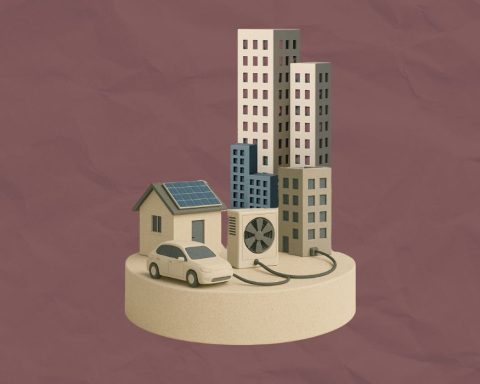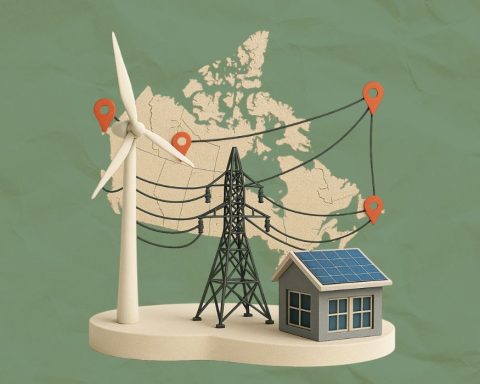There is a popular position on how we should respond to the climate change emergency that goes by the acronym AOTA, for “all of the above.” The AOTA perspective is that we must indiscriminately pursue every option we have for achieving an emissions-free energy system – energy efficiency, wind, solar, nuclear, geothermal, even tidal – while at the same time hedging our bets by continuing to support new infrastructure for the use and supply of fossil fuels.
The appeal of the AOTA position to politicians is obvious: it allows them to pander to every constituency and avoid alienating potential supporters. It is not leadership, but as political expediency it is tried and true.
The AOTA position can also be justified as a legitimate strategy in the early phases of understanding and confronting a challenge like climate change where the path forward is not yet clear. AOTA “keeps all options open” until the choices crystallize.
But we are no longer just beginning to consider our options for effectively responding to climate change. We know that the response must give priority to electrifying the end uses of energy and building up a supply of renewable, emission-free electricity. And from Tinseltown to Tennessee, the devastating impacts of climate change have come to America, with the global cost of wildfires, floods and killer heat waves now more than $2 trillion and growing exponentially.
We are entering the endgame in our encounter with global warming. Time is short, capital is limited, and the penalties for bad moves at this stage in the game are severe.
Climate denial 2.0
Climate denial comes in many forms, many of which are disingenuous and driven by self-interest, but some of which are genuinely held by people informed by and with respect for the science.
Climate denial 1.0 refers to the outright denial that anthropogenic greenhouse gases are causing global warming or, in its more extreme form, that global warming is even happening. When scientific concern about human-caused global warming began to grow, it was based on our understanding of the greenhouse effect and what the climate models of the day predicted would be the deleterious impact of continued reliance on and growth in fossil fuel combustion.
The scientific skepticism melted away in the 1990s as the models improved, rising temperatures rocketed out of the background noise, and the consequences began to multiply.
But then a new type of climate denial began to take hold; let’s call it climate denial 2.0. This more insidious type of denial does not reject the scientific fact of human-caused climate change, but it does reject the need for or the feasibility of an urgent response. And this in turn leads to the “madly off in all directions” response – more respectfully known as “all of the above” – that characterizes too much of the current policy and business response to the climate emergency.
Not all winners
In our Climate Dollars project, we have been quantifying the capital costs of the transition to zero emissions for Canada by 2050, and the results underscore how much more the transition will cost if we do not make smart choices.
RELATED
A zero-emission Canada is within reach. And we can afford it.
Most Canadians want the government to prioritize clean energy over oil and gas
Carney wants a pipeline. Building one will be harder than it sounds.
Among the clear positive choices are heat pumps, electric vehicles, wind turbines, vehicle-to-grid storage infrastructure and continental grid interconnectivity. Working together, these technologies can cut a path to zero emissions that demands about $1.5 trillion in capital investment over the next 25 years. At an average of $60 billion per year, this is well within the capability of Canadian capital spending and tracks below our own and others’ previous estimates of the cost of the transition. The returns are positive, the economic benefits are clear, and Canada would secure its position in the 21st-century global economy.
This is not an AOTA approach. Several popular climate solutions fail to pass muster when viewed through the twin lenses of urgency and affordability.
Deep residential retrofits. Viewed strictly as climate mitigation, deep residential retrofits cost more than the capacity investments they avoid. Unless and until the retrofit industry can come up with technological and business practices that cut the cost of deep retrofits by 50% or more, our strategy for new and existing buildings must focus on affordability, electrification and resilience to extreme weather.
Public transit megaprojects. Public transit is an essential component of a highly functional modern urban community, but it is a slow, expensive and relatively ineffective approach to driving down emissions; it didn’t make the cut in our capital budget for responding to the climate emergency
Nuclear power generation. New nuclear capacity drives up the overall cost of decarbonization, even after allowing for the lower investment in renewables and transmission infrastructure it facilitates, so it did not make the cut either.
When we include these options, the capital requirements increase to more than $2.3 trillion. And it goes without saying that we should be past the point where investments in the production and use of fossil fuels should still be happening. Such investments are antithetical to an emergency response to climate change. They lock in fossil fuel dependence and draw capital away from urgently needed options that can make a positive difference. They literally add fuel to the fire and when favoured provide a strong indication that climate denial 2.0 is afoot.
It’s choosing time.
Ralph Torrie is director of research at Corporate Knights.
The Weekly Roundup
Get all our stories in one place, every Wednesday at noon EST.





